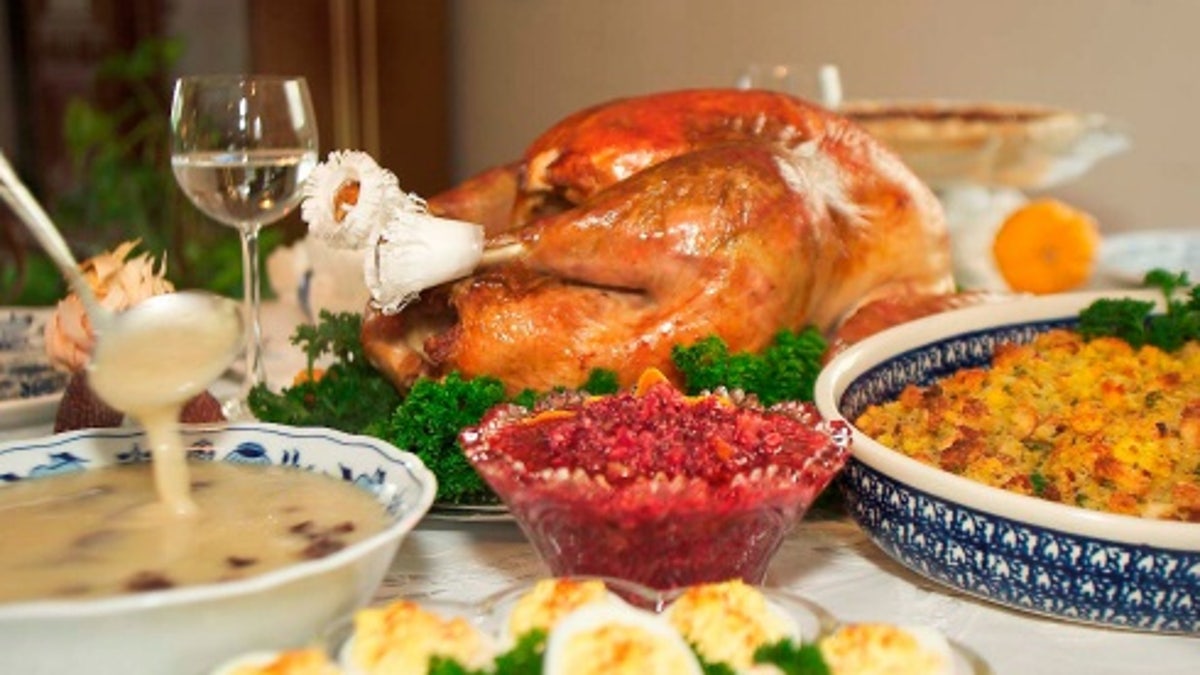
(AF.mil)
For many people, Thanksgiving marks the start of the “Season of Overeating.” Holiday meals often mean a table overflowing with foods that are as much about tradition as they are about flavor. We’ve turned the holiday into a race to see who can eat the most and feel the most miserable when the meal is over. Then we throw ourselves into a chair to rest until we’re ready to eat pie.
My family’s traditional meal starts with stone crabs in a decadent dipping sauce. We also have turkey with all the fixings including my favorite – gravy. And you can’t pass up my mom’s amazing corn casserole that probably has a thousand calories per bite.
No matter what foods you love to eat for the holiday, be careful not to justify your bad eating decisions because the holidays only come once a year. It is easy to make excuses, but there is no reason to risk your health by overeating. I’m not suggesting you should pass up all your traditional favorites, but I am saying you can help yourself feel better both physically and mentally after the meal by making better choices.
You can start by taking a fresh look at what the holiday really means. Thanksgiving is supposed to be a day for giving thanks, so take a minute to think about what you are thankful for. Whether it is your health, family, work, opportunities, we have so many things to be thankful for beyond a table full of food. This year, start setting healthy goals on Thanksgiving and work with your family to help each other accomplish them.
Here are some of my suggestions to avoid the after-dinner food coma:
• If you’re doing the cooking, opt for lower fat or lower calorie ingredients. Keep sauces and sweet toppings on the side so you can chose to eat less but still get a sample of the flavor.
• Don’t come to the table starving. You’ll have a harder time making good choices if you are too hungry. Be sure to eat a healthy breakfast and try to eat at a normal time to keep your body on schedule. Also, don’t stuff yourself on appetizers before sitting down to a big meal.
• Serve a large glass of water next to a moderate glass of wine and be sure you take two sips of water for every sip of alcohol. You’ll feel better, and you’ll make better choices about what you eat if you maintain this balance.
• Don’t substitute chargers or serving platters for normal size dinner plates. If anything, opt for a smaller plate than usual to help control your portions. It’s too easy to fill a big plate with bigger scoops of everything on the table.
• Start with sample-size spoonfuls of everything you want to eat. By the time you work your way through it, you may find that you are satisfied and don’t need any more. If you dished up too much, you’re much more likely to eat it even after you are full.
• Spend time at the table talking with friends and family and enjoying the experience of the meal. If you eat too quickly, your stomach will be full before the signal can reach your brain telling you to stop eating. The typical Thanksgiving dinner takes about two days to prepare. Do your hostess the courtesy of spending more than 10 minutes wolfing it down.
• Plan a new tradition of exercise. Don’t slide off your chair at the table into a reclining position on the couch. Start a new tradition by taking the family for a walk or getting up for a game of bocce ball in the back yard.
If Thanksgiving has traditionally been a day to fall off your normal eating plan, let this be the year to start a new, healthier tradition. Make a commitment to yourself to be your own best health advocate every day of the year, including holidays. Plan ahead so you can be successful at the holiday table and let Thanksgiving be a day of thanks, not a day of overeating. Your body will thank you for it.
Michelle King Robson (pronounced robe-son) is one of the nation's leading women's health and wellness advocates. She is the Founder, Chairperson and CEO of EmpowHER, one of the fastest-growing and largest social health companies dedicated exclusively to women's health and wellness. In 2011 EmpowHER reached more than 60 million women onsite and through syndication expects to reach more than 250 million in 2012.
